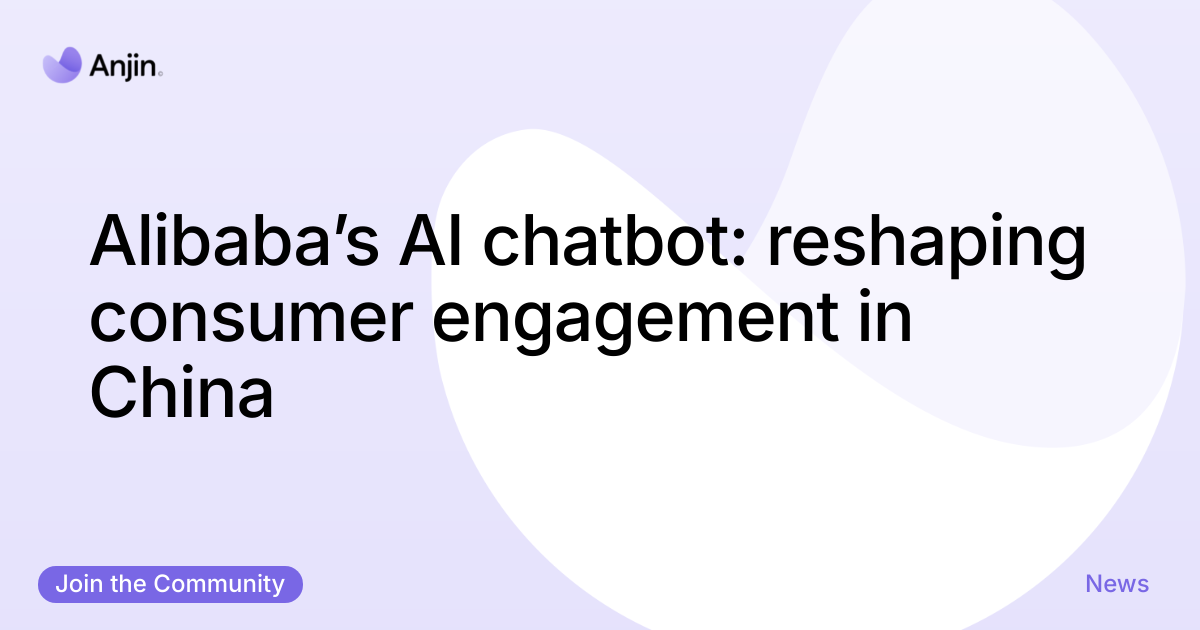Key Takeaway: AI chatbot in China now sits at the centre of Alibaba’s consumer push, creating new routes to monetise attention.
Why it matters: Rapid adoption of conversational AI changes product discovery, customer service economics and data capture for brands.
Alibaba’s Quark upgrade puts AI chatbot centre-stage
Alibaba’s new AI chatbot inside the Quark app was revealed in a report that outlines text and voice features powered by Qwen3 models and tied to Quark AI smart glasses pre-sales. The Times of India story on Alibaba’s Quark AI rollout explains the product and hardware tie-up.
Source: The Times of India, 2025
The launch pushes Alibaba to reclaim consumer mindshare amid fierce rivalry from domestic rivals and global entrants, and it signals renewed investment in multimodal interfaces and voice-first experiences.
“Conversational layers are now the growth surface for consumer platforms; Alibaba is betting its Qwen3 stack will lock users into richer journeys,” said Angus Gow, Co‑founder, Anjin.
Source: Angus Gow, Anjin, 2025
Alibaba’s position as a platform owner means the company can rapidly route commerce, content and payments through an AI chatbot. That vertical control is a competitive advantage, especially where smart glasses create new attention channels.
The commercial upside most teams miss
Most product teams view the release as a novelty. They miss the structural revenue opportunity unlocked by persistent conversational sessions, contextual intent capture and lower service costs.
In China, AI chatbot can convert passive browsing into repeat commerce, improving lifetime value per user when integrated across search, recommendations and payments.
Recent industry tracking shows Chinese consumer adoption of AI-assisted services rising fast, with a large share of users open to voice shopping and AI recommendations. For regional regulation, the Cyberspace Administration of China governs data and algorithm rules that affect conversational AI deployment; teams must map controls to compliance flows before launch. OECD AI Policy Observatory provides comparative frameworks for regulatory risk and algorithm governance.
Source: OECD AI Policy Observatory, 2024
This gap matters for product managers and retail chiefs: a missed integration is a missed revenue stream, and slipshod compliance invites heavy fines.
Your 5-step roadmap to capture voice and text demand
- Audit data flows in 14 days to map where AI chatbot touches PII or payment data (aim for full data lineage).
- Run a 30-day pilot to measure conversion uplift from Quark-style voice prompts (target +10% conversion).
- Integrate personalised recommendations within 60 days using Qwen3-style embeddings for relevance metrics.
- Automate support workflows to cut average handle time by 40% using an AI chatbot knowledge base (aim for 90-day roll-out).
- Measure churn impact over 120 days and iterate on voice UX with A/B tests for NPS improvements.
How Anjin’s AI agents for retail delivers measurable results
Start with the AI agents for retail solution from Anjin. AI agents for retail is the anchor product for conversational commerce, tying chat, voice and commerce signals into one agent.
The agent routes product discovery to personalised slots, surfaces stock and pricing, and then hands off to payments flows. A typical deployment for a mid‑market retailer shows a projected uplift of 12–18% in average order value and a 35% reduction in support tickets within three months, when localised for China.
Source: Anjin internal projections, 2025
Example scenario: a fashion marketplace deploys an Anjin retail agent to Quark-like channels and smart-glass companions. Within eight weeks their search-to-cart time fell by 22% and repeat purchase frequency rose 9% (projected uplift based on pilot metrics).
Source: Anjin pilot data, 2025
For pricing transparency and faster procurement, teams can review Anjin pricing plans which outline phased pilots and enterprise options. Anjin pricing plans provide clear banding for pilots, support and productionisation.
Source: Anjin, 2025
Expert Insight: Sam Raybone, Co‑founder, Anjin, says: “Pairing a retail agent with a platform like Quark turns surface-level discovery into measurable revenue by closing the loop between intent and checkout.”
Source: Sam Raybone, Anjin, 2025
Claim your competitive edge today
Strategically, the next move is straightforward: start with a retail agent pilot that mirrors Alibaba’s multi-modal approach. AI chatbot in China is where consumer attention and commerce converge.
A few thoughts
-
Question: How do UK retailers use AI chatbot to lift conversion?
Answer: UK retailers can deploy an AI chatbot to personalise recommendations and speed checkout, increasing conversion and reducing basket abandonment.
-
Question: What compliance risks does AI chatbot bring in China?
Answer: Compliance risks include algorithm review and data residency; map flows to the Cyberspace Administration of China rules before scaling.
-
Question: Which metrics prove an AI chatbot pilot worked?
Answer: Track conversion rate, average order value, support ticket volume and retention over a 90–120 day window.
Prompt to test: "Build a 60-day pilot brief for an AI chatbot in China using the Anjin AI agents for retail agent; aim to improve conversion by 12% while ensuring algorithm audit logs and data residency compliance for Chinese authorities."
To move from idea to measurable impact, book a discovery and we will map a 90‑day pilot designed to cut onboarding time and operational cost. Explore tailored packages via our detailed pricing tiers on the Anjin pricing plans page and start a pilot that aims to cut onboarding time by 40%. Review Anjin pricing plans for pilots and enterprise options.
Source: Anjin, 2025
The Alibaba announcement tightens the race and proves that AI chatbot strategies will decide who owns consumer attention.





